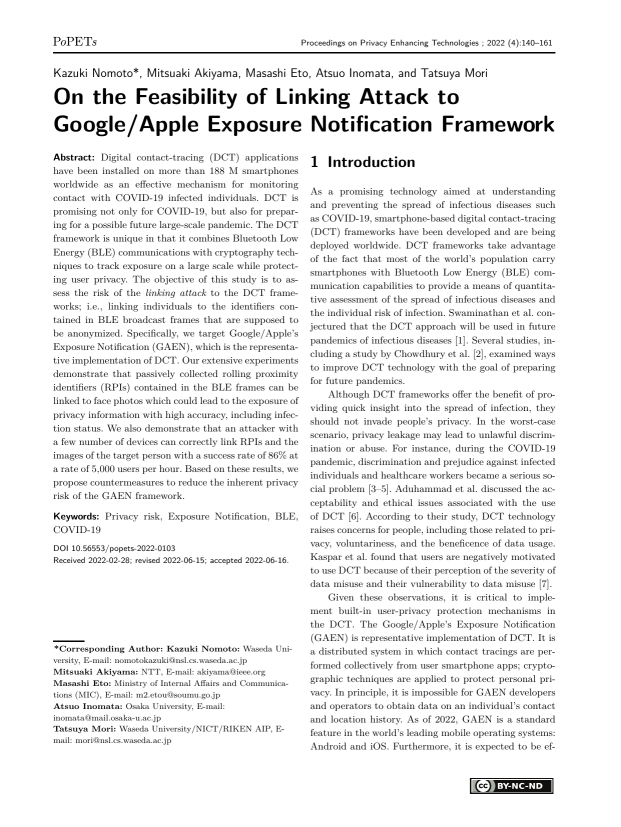On the Feasibility of Linking Attack to Google/Apple Exposure Notification Framework
Authors: Kazuki Nomoto (Waseda University), Mitsuaki Akiyama (NTT), Masashi Eto (Ministry of Internal Affairs and Communications (MIC)), Atsuo Inomata (Osaka University), Tatsuya Mori (Waseda University/NICT/RIKEN AIP)
Volume: 2022
Issue: 4
Pages: 140–161
DOI: https://doi.org/10.56553/popets-2022-0103
Abstract: Digital contact-tracing (DCT) applications have been installed on more than 188 M smartphones worldwide as an effective mechanism for monitoring contact with COVID-19 infected individuals. DCT is promising not only for COVID-19, but also for preparing for a possible future large-scale pandemic. The DCT framework is unique in that it combines Bluetooth Low Energy (BLE) communications with cryptography techniques to track exposure on a large scale while protecting user privacy. The objective of this study is to assess the risk of the linking attack to the DCT frameworks; i.e., linking individuals to the identifiers contained in BLE broadcast frames that are supposed to be anonymized. Specifically, we target Google/Apple’s Exposure Notification (GAEN), which is the representative implementation of DCT. Our extensive experiments demonstrate that passively collected rolling proximity identifiers (RPIs) contained in the BLE frames can be linked to face photos which could lead to the exposure of privacy information with high accuracy, including infection status. We also demonstrate that an attacker with a few number of devices can correctly link RPIs and the images of the target person with a success rate of 86% at a rate of 5,000 users per hour. Based on these results, we propose countermeasures to reduce the inherent privacy risk of the GAEN framework.
Keywords: Privacy risk, Exposure Notification, BLE, COVID-19
Copyright in PoPETs articles are held by their authors. This article is published under a Creative Commons Attribution-NonCommercial-NoDerivs 3.0 license.


